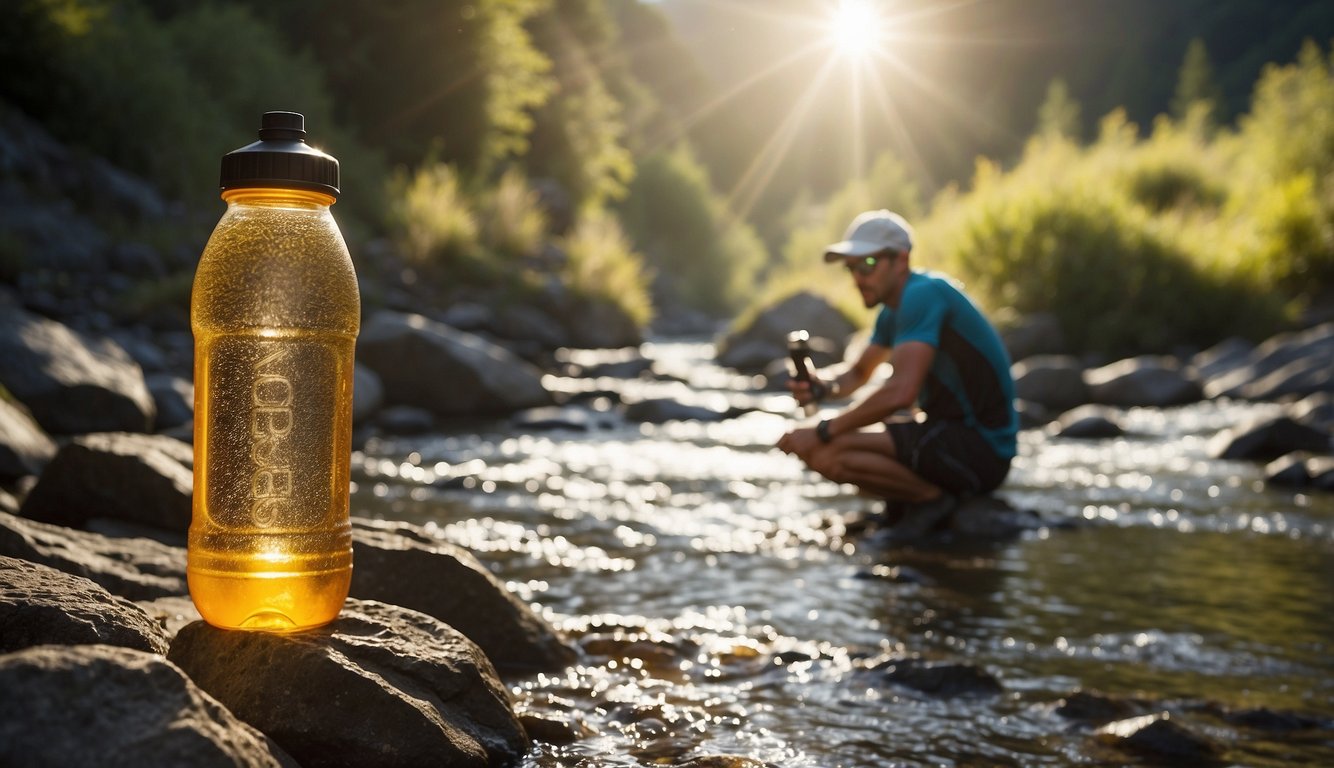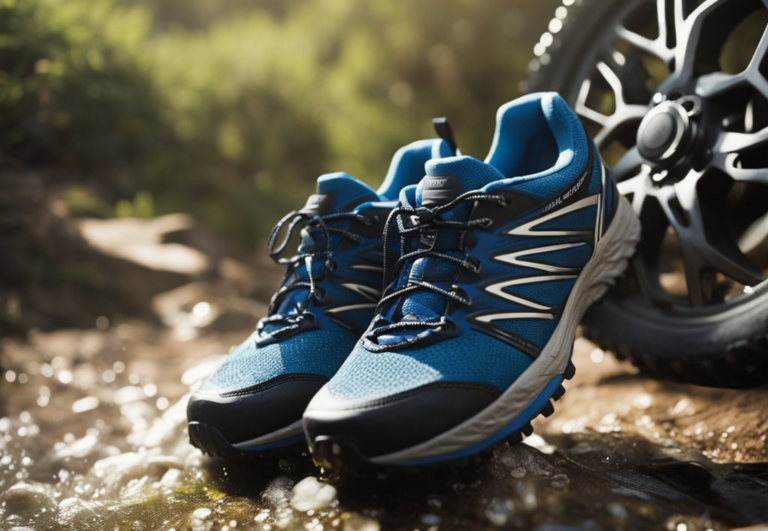The Science Behind Hydration: How Electrolytes Maintain Fluid Balance in Trail Runners
Maintaining proper hydration is crucial for the health and performance of trail runners. As someone who has coached athletes through the demanding conditions of trail running, I’ve seen firsthand how fluid and electrolyte balance can impact a runner’s ability to perform. The body is composed of up to 60% water, which plays a pivotal role in organ function, nutrient transport, and maintaining blood flow. For runners, staying hydrated is not just about drinking water; it’s about ensuring that the body retains the right balance of electrolytes to function optimally during extended physical exertion.
Electrolytes, such as sodium and potassium, are essential for the electrical signaling in our body that controls muscle contractions and nerve impulses. As we sweat, particularly during long runs or in hot weather, we lose these vital minerals along with water. To combat dehydration and electrolyte imbalances, trail runners must strategize their intake of fluids and electrolyte-rich foods or supplements based on their individual sweat rates and the duration and intensity of their runs. A balanced diet and appropriate hydration solutions can replenish what we lose in sweat, ensuring that every run is powered by a well-hydrated body.
Hydration and Electrolytes for Trail Runners – an Overview
Hydration is crucial for trail runners, with water and electrolytes playing pivotal roles in maintaining fluid balance and preventing dehydration. As a UESCA certified running coach with hands-on experience, I’ll break down the essentials of hydration and electrolytes, focusing on sodium and potassium—a runner’s key allies.
The Role of Water in the Body
Water is the primary component of blood, serving as a medium for transporting nutrients and oxygen to cells and waste products away from them. It’s essential for maintaining blood flow and regulating body temperature, especially during long runs. Adequate water intake is vital; too little can lead to dehydration, affecting your health and running performance.

Electrolytes and Their Functions
Electrolytes are minerals that, when dissolved in water, conduct electricity to power vital bodily functions. They are essential for:
- Osmosis: Balancing fluid levels inside and outside cells.
- Muscle contractions: Including your heart, which is critical when trail running.
- Nerve signaling: Sending electrical impulses throughout your body for coordination and reflexes.
Key electrolytes include sodium, potassium, chloride, calcium, and magnesium.
The Importance of Sodium and Potassium
- Sodium: Regulates extracellular fluid balance, assists in muscle contractions and nerve function. It’s commonly lost through sweat and must be replaced to maintain electrolyte homeostasis.
- Potassium: Controls intracellular fluid balance and works with sodium to support cellular function and heart rhythm. Balanced potassium levels are necessary for health and performance.
Maintaining a balance between sodium and potassium is essential for fluid and electrolyte balance, which influences hydration status and running efficiency.
Assessing Hydration Needs for Trail Running
As an expert in trail running and hydration, I understand the balance of fluid intake and output. It’s essential for performance, recovery, and overall health.
Hydration Before, During, and After Running
Before Running: To establish a baseline for fluid balance, drink water regularly throughout the day. On the morning of your run, aim for 17-20 ounces of water 2-3 hours before starting.
During Running: Depending on temperature and intensity, aim for 7-10 ounces of fluid every 10-20 minutes. Drinks containing electrolytes are beneficial for longer distances to prevent hyponatremia—low sodium levels due to excessive water intake.
After Running: Rehydration is as crucial as pre-hydration. Drink 16-24 ounces of fluid for every pound lost during the run. Including sodium in your post-run meal aids fluid retention and recovery.
Identifying Personal Sweat Rate
Calculate your sweat rate by weighing yourself before and after an hour of running. The weight lost (minus any fluids consumed) is your sweat rate. For accuracy, replicate conditions like temperature and running intensity.
| Activity | Pre-activity Weight | Post-activity Weight | Fluids Consumed | Sweat Rate (per hour) |
|---|---|---|---|---|
| Running | 150 lbs | 148 lbs | 16 oz | 32 oz |
Hydration plans must be personalized as sweat rates vary. Consistently monitoring changes helps fine-tune fluid needs.
Signs of Dehydration and Overhydration
Recognize dehydration symptoms such as thirst, fatigue, and dark urine. Ignoring these can lead to diminished performance and increased risk of heat-related illnesses.
Conversely, overhydration, or hyponatremia, can be life-threatening and presents with symptoms like headaches, confusion, or bloating. Listen to your body, and maintain a consistent drinking routine without overdoing it.
Preventing Dehydration and Electrolyte Imbalance

Proper hydration and electrolyte management are crucial for trail runners to maintain performance and avoid cramps or muscle cramping. Here’s how I ensure a fluid and electrolyte balance during long runs.
Strategies for Maintaining Fluid Balance
I start by calculating my sweat loss, which can be done by weighing myself before and after a run. For every pound lost, I aim to drink 16-24 ounces of fluid. Hydration should not just be about water; maintaining a balance of electrolytes, like sodium and potassium, is also vital as they are lost through sweat. Here’s a simple strategy I recommend:
- Pre-Run: Drink 17-20 oz of fluid at least 2 hours before running.
- During a Run: Aim for 7-10 oz every 10-20 minutes. Conditions vary; in hot weather, I may need to drink more.
- Post-Run: Rehydrate with 16-24 oz per pound of body weight lost within the first few hours.
Fluid Intake Table
| Run Time | Fluid Intake (oz) |
|---|---|
| < 1 hr | 17-20 pre-run + 7-10 every 20 min |
| 1-2 hrs | 17-20 pre-run + 7-10 every 15 min |
| > 2 hrs | 17-20 pre-run + 7-10 every 10 min |
I also pay attention to the color of my urine, aiming for a light straw color, indicating good hydration status.
Choosing the Right Hydration Products
Selecting hydration products containing a balanced blend of electrolytes is essential. It’s not just about sodium chloride; a balanced electrolyte profile includes sodium, potassium, magnesium, and calcium. I skip drinks with high sugar content in favor of products that offer
Electrolyte tablets or powders that can be added to water:
- Look for: No added sugar, a variety of electrolytes, and easy to carry on trails.
- Brands I trust: offer a clear list of electrolytes and amounts per serving on their label.
Sports drinks:
- Advantages: Convenient, pre-mixed, and provide quick electrolyte replacement.
- Consideration: Be cautious of those high in sugar or artificial additives.
For electrolyte imbalance prevention, I include these in my hydration routine:
- Daily intake: A sports drink or electrolyte solution once daily, especially in preparation for a run.
- During runs: I prefer a sports drink diluted with water or an electrolyte tablet to keep dehydration and electrolyte imbalance at bay.
- Post-run: After intense or long sessions, a well-formulated sports drink can restore fluid and electrolyte balance more effectively than water alone.
Nutrition and Hydration for Optimal Performance

Proper nutrition and hydration are fundamental to a trail runner’s success. A focused approach to fluid and energy intake ensures sustained performance and recovery.
Integrating Hydration into Training Regimens
As a UESCA certified running coach, I stress the importance of hydration during training. Runners should drink water consistently throughout the day, aiming for at least 500 mL two hours before running to ensure optimal hydration levels. Additionally, incorporating electrolyte-rich drinks can help maintain fluid-electrolyte balance, crucial during longer and more intense sessions to prevent fatigue.
- Pre-Training: 500 mL of water
- During Training: According to thirst, include electrolytes
- Post-Training: Rehydrate based on fluid loss (weigh before and after)
Energy Sources and Hydration
Carbohydrates are the primary energy source for trail runners. To avoid energy dips, I suggest pairing hydration with carbohydrate-rich snacks or energy gels, particularly during long runs, which can provide a quick and convenient calorie boost.
Aim for 30-60 grams of carbohydrates per hour during extensive runs to fuel performance without overwhelming the digestive system.
- Carbohydrate Intake During Runs: 30-60 grams per hour
- Hydration: Pair with appropriate fluid intake
Impact of Climate and Altitude on Hydration
Trail running in different environments, especially in varying climate and altitude, requires a personalized hydration strategy.
Higher altitudes and warmer climates increase fluid needs due to enhanced sweat rates and respiratory water loss. Runners and coaches should adjust fluid intake accordingly, with an emphasis on electrolytes to compensate for increased loss through sweat.
- Warm Climates: Increase fluid intake; add more electrolytes
- High Altitudes: Monitor hydration status closely; adjust as required
By tailoring hydration and nutrition intake to the training conditions and individual energy demands, trail runners can strive for optimal performance and recovery.
Responding to Challenging Variables

In trail running, extreme temperatures and long-distance events test our limits. Recognizing and adjusting to these factors is crucial for maintaining hydration and electrolyte balance.
Handling Extreme Temperatures
As a trail runner, I’ve learned that heat and cold significantly affect hydration. In hot weather, excessive sweating increases not just water loss but also sodium and electrolytes. It’s important to pre-hydrate and drink fluids containing sodium during the run. Hydration should aim at replenishing lost fluids without leading to overhydration, which can cause issues like swelling or hyponatremia.
| Temperature | Hydration Strategy |
|---|---|
| Hot | Increase fluid intake; include electrolytes |
| Cold | Monitor for dehydration; fluids may be less enticing |
Cold weather poses a deceptive risk; we may not feel as thirsty, yet we’re still losing water through respiration and sweat under layers. I advise sipping small volumes of water at regular intervals to maintain fluid-electrolyte balance.
Hydration Management in Long-Distance Events
During marathons or ultra-marathons, maintaining hydration and electrolyte balance becomes a game of trial and error. Drink to thirst, and ingest electrolytes to counteract losses from sweat. Weighing yourself before and after training runs can give insights into your fluid losses and help tailor your hydration strategy.
Monitoring for signs of dehydration like muscle fatigue, confusion, or nausea is crucial. Likewise, be attentive to symptoms of overhydration such as muscle weakness or weight gain during the event.
Recovery post-event involves rehydrating and replenishing electrolytes to support muscle repair and reset fluid-electrolyte balance. Solutions containing sodium and potassium can be especially beneficial. Avoid drinks with high caffeine or sugar concentration as they may affect digestion and hydration status unfavorably. Remember that individual needs may vary, and there’s no one-size-fits-all approach to hydration and health.






